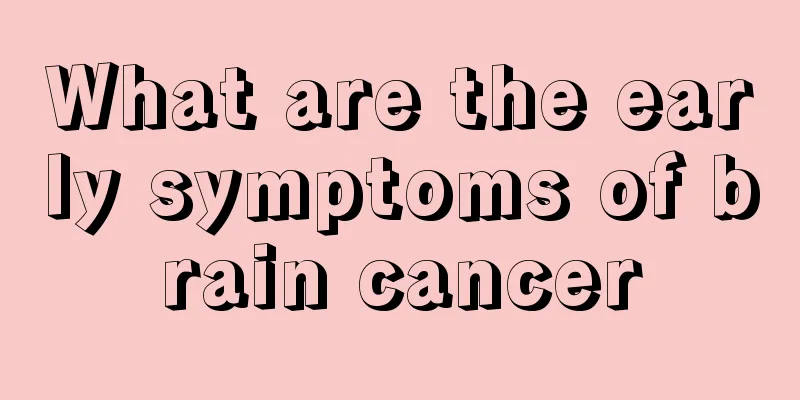Causes and treatments of Bell's palsy

|
Many people don't know much about Bell's palsy. In fact, Bell's palsy is also known as facial paralysis. Some deformities appear on the face, such as crooked mouth, triceps fasciitis, etc., mostly due to impaired facial expression function. This is a common disease and a frequently occurring disease in certain age groups. There are many reasons for this, including cerebrovascular disease, brain trauma, inflammation, etc. For patients, in addition to improving the body's immunity and maintaining a good attitude, the most important thing is to go to the hospital for treatment. Causes There are many causes of facial neuritis. Clinically, it can be divided into central facial neuritis and peripheral facial neuritis according to the site of damage. The lesions of central facial neuritis are located in the corticobulbar tract between the facial nerve nucleus and the cerebral cortex, and are usually caused by cerebrovascular disease, intracranial tumors, brain trauma, inflammation, etc. Peripheral facial neuritis lesions occur in the facial nerve nucleus and facial nerve. The common causes of peripheral facial neuritis are: ① infectious lesions, mostly caused by the activation of viruses lurking in the sensory ganglia of the facial nerve; ② ear diseases, such as otitis media; ③ autoimmune reactions; ④ tumors; ⑤ neurogenic; ⑥ trauma; ⑦ poisoning, such as alcohol poisoning, long-term exposure to toxic substances; ⑧ metabolic disorders, such as diabetes, vitamin deficiency; ⑨ vascular insufficiency; ⑩ congenital facial nerve nuclear dysplasia. Clinical manifestations The symptoms are often paralysis of the facial expression muscles on the affected side, disappearance of forehead wrinkles, widening of palpebral fissure, flattening of nasolabial groove, and drooping corners of the mouth. When smiling or showing teeth, the drooping corners of the mouth and facial crookedness are more obvious. The affected side should not frown, knit brows, close eyes, puff out air, or purse lips. When puffing out cheeks and whistling, air leaks out because the lips on the affected side cannot close. When eating, food residues often remain in the buccal space on the affected side, and saliva often flows down from that side. Because the lacrimal points are everted with the lower eyelid, the tears cannot be drained normally and overflow. Most facial paralysis caused by facial neuritis is unilateral, and is more common on the right side. Most patients often suddenly find that one side of the cheek has difficulty moving and the corner of the mouth is crooked when washing their face or rinsing their mouth in the early morning. Some patients may have taste disorders in the front 2/3 of the tongue, hearing hypersensitivity, etc. Peripheral facial neuritis caused by trauma can be divided into two types: early-onset (facial paralysis occurs immediately after injury) and delayed-onset (facial paralysis occurs 5 to 7 days after injury). Based on the early or late occurrence and degree of facial paralysis after injury, electrical excitation and electromyography examinations can be used to evaluate the extent of facial nerve damage and determine the prognosis. |
<<: What to do if your hair is naturally curly and fluffy
>>: Can I drink oatmeal during breastfeeding?
Recommend
How to eat to nourish the stomach?
Everyone knows that daily diet plays a critical r...
What is the recurrence rate of colon cancer
What is the recurrence rate of colon cancer? The ...
I am a 48-year-old female with severe iron deficiency anemia after gastric cancer surgery
If gastric cancer causes iron deficiency anemia, ...
How to open your throat when singing
Some people like singing very much, but some peop...
What should I do if my white clothes turn yellow?
In summer, many friends like to wear white clothe...
What to do if you have a fear of kissing
Many people like kissing and think kissing is a w...
Rehabilitation care for lymphoma
I believe everyone knows how terrible lymphoma is...
What is pulmonary capillary wedge pressure
Everyone's lung function must be normal becau...
Why is rose pollen so popular among young people?
Rose pollen is a very common maintenance and nour...
What does coughing up blood from lung cancer look like?
Hemoptysis due to lung cancer is characterized by...
Eyes are becoming more and more sensitive to light
Most people will feel photophobia and discomfort ...
4 types of clinical manifestations of prostate cancer
Prostate cancer is a common male malignancy. What...
How to remove difficult stains from clothes, housewife's home tips
Removing glue stains If there are stains such as ...
My ankle suddenly hurts as if it was sprained
Sometimes a person's body will experience sud...
Is mold an anaerobic bacteria?
Most molds are anaerobic bacteria, but there are ...









